July 1, 1916
“Boys were falling on either side until there were only two of us left. He got it. He was killed. Then I got it. I got two bullets in me. I dropped. Blood was coming out of me...I stopped the blood as best I could...I said my prayers and I seen my mom, as far as I knew, but I knew she wasn’t there.”

The Valley of the Somme, Northern France
“They wrote in the old days that it is sweet and fitting to die for one’s country. But in modern war there is nothing sweet nor fitting in your dying. You will die like a dog for no good reason.” - Ernest Hemingway
The train was barely ten minutes north of Gare du Nord in Paris when I realized I was already becoming emotional. Small farms and tractors rolling through fields of summer grain flew past the tall windows as we gained speed toward Amiens, an historic village sitting astride the Somme River. Amiens had twice endured the geographic misfortune of being strategic soil sitting between great armies and had been destroyed and rebuilt after bombs and artillery fire during both World Wars. The city’s narrow streets and bright cafes flickered in the afternoon August sun as I arrived and did not suggest death and destruction. Canals led off the great river and accessed parts of the city that attracted tourists to Amiens’ history and culture.
My destination, though, was a small community just to the northeast, which had been sanctified by the blood of young soldiers and the militaristic idiocies of man. The taxi driver in Amiens understood my broken high school French and nodded before leaving the train station and wending his way along the river on a highway that led us quickly to a village named Beaumont Hamel. I had left my family behind in Versailles because I was convinced my initial experience at the Newfoundland and Beaumont Hamel Memorial Park was likely to be overwhelmingly emotional and I was concerned about my capabilities of dealing with the facts. My time there was also to be limited and I wished to have no distractions as I walked among the ghosts of one of history’s deadliest fields of battle.
I had not expected to be entranced with bird song, though, before I had even closed the taxi door. Nature seemed to have evolved the birds with harmonies loud enough to drown out any future gunfire at the Beaumont Hamel Newfoundland Memorial. I was the only one listening that day. No other visitors appeared to be on the premises, but before I got close to the museum, I was met by a young docent chatting me up in French.
“Je ne sais pas Francais,” I said.
“Oh, oh, that’s fine. I’m sorry. I speak English. I’m from Newfoundland.”
“That’s great.”
“Can I show you around, or give you any information?” He was so eager to help, and I hated to tell him no. His cargo shorts looked new or starched and his face was friendly and open, big-eyed and happy.
“Forgive me. Maybe later? My grandfather fought here, and I want to be alone for a while and try to understand, maybe feel a bit of what it must have been like.”
“Oh, certainly, I understand. So, you’re a Newfoundlander, too?”
“No, my mother is. My father was American.” I started to say thank you and walk up to the monument, but I remembered my grandfather’s service medal around my neck and was curious if he might give me some historical context. I pulled it out of my shirt.
“Have you ever seen one of these?”
He reached over and cupped the piece in his hand, and carefully read the inscriptions.
“Oh my gosh, no, but I’m sure our curator would know. It’s beautiful. Must be very precious to you.”
“Yes, of course, it is.”
“Would you want to show it to our historian? She’s here now. I could introduce you.”
“Maybe after I’ve walked the trenches. But thanks for your kindness.”
“Certainly. Let us know if we can help.”
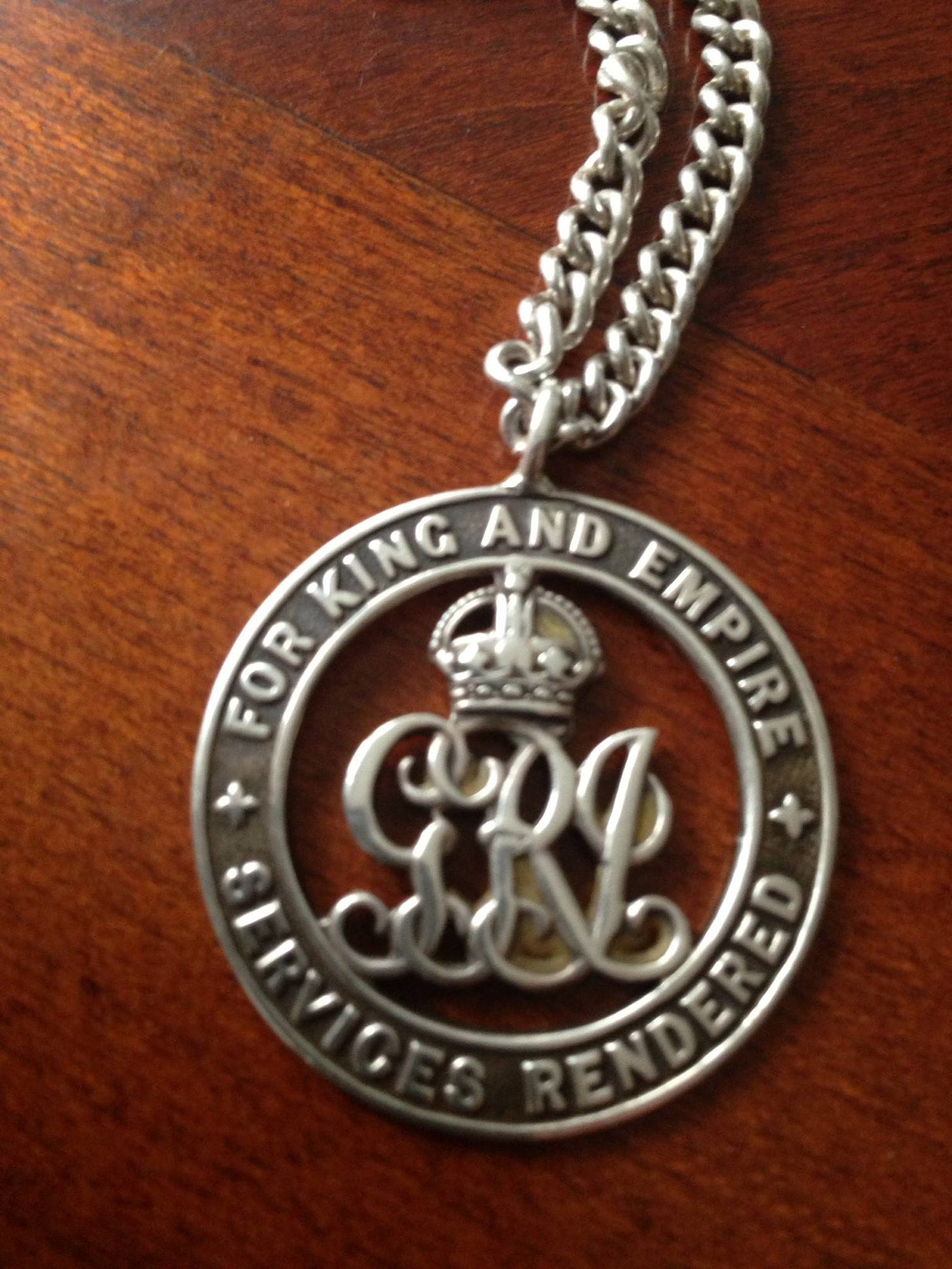
The centerpiece of the Newfoundland Memorial outside the village of Beaumont Hamel is a life-sized bronze caribou standing atop an earthen and granite cairn. His head and antlers are tilted back in eternal defiance as he stares off toward Hawthorne Ridge, a redoubt that protected German lines. I stood below his proud gaze and looked up at the symbol of the Royal Newfoundland Regiment, standing guard now only against the sky. I cannot account for the serenity I began to feel, an absolute calm suggesting a connection to something holy. Three plaques affixed to the granite base listed the names of more than 800 Newfoundlanders who had died in the Battle of the Somme or at sea in the Newfoundland Naval Reserve and the Mercantile Marines. Their whereabouts and remains were still unknown.
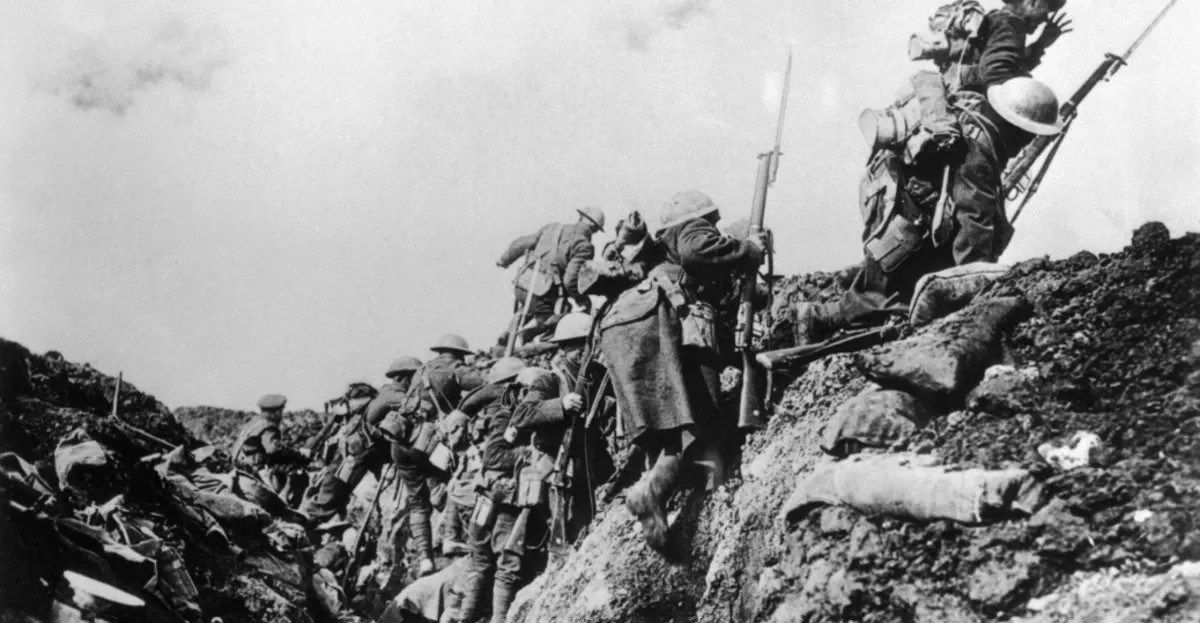
The trench works were behind me, and I was reticent to walk the surfaced pathways into their midst. Regardless of how hard I tried, I doubted there was any way I might comprehend what had transpired on the morning of July 1, 1916. The decades of weather had rounded off the edges of parapets with rain and wind and snow, and thick grass grew along what were once muddy and collapsing dirt walls. The forward trenches, where I lingered for almost an hour, had been filled with so many bodies of Welsh and Scotsmen that the Newfoundlanders were forced to launch their attack from communications lines further back, which victimized them with greater exposure to German machine guns. They had named that rear part of the trenches St. John’s Road after the Newfoundland hometown of most of their regiment. In a few of the other positions I examined, rusting artillery chassis sat where they had been abandoned after each successive gunner was cut down by the Kaiser’s men. Even in the uncontrolled environs of trench warfare, though, what happened to the men of Newfoundland was inexcusable.
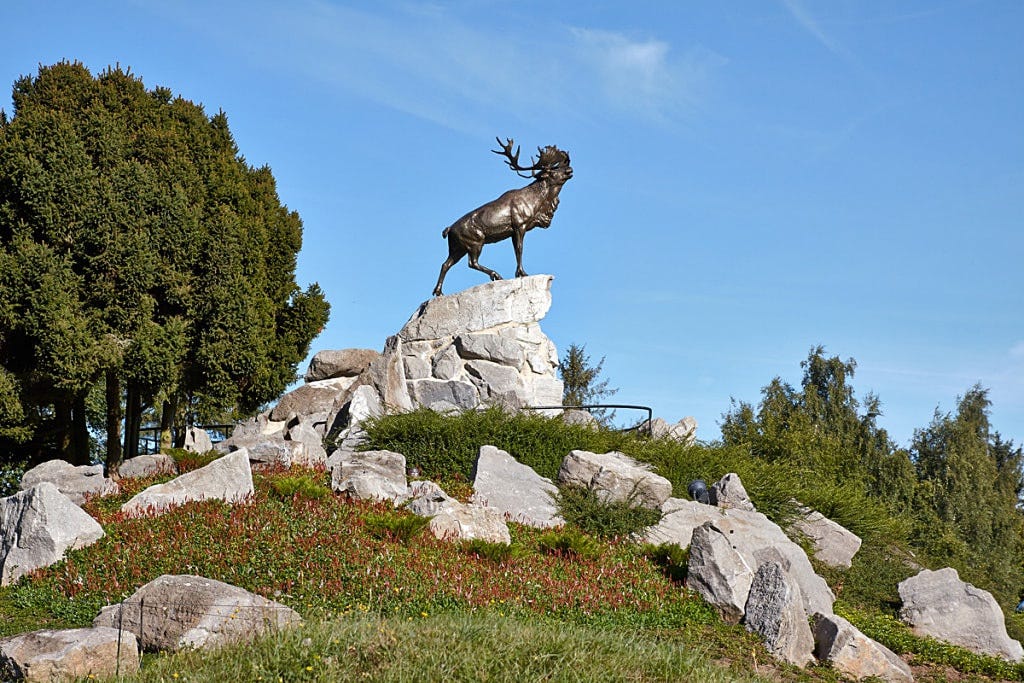
The Newfoundlanders had got back to full battalion strength after leaving the Dardanelles. Reinforcement efforts during a rest period in England increased their troop count to the eleven hundred that had landed at Gallipoli, and the “fighting Newfoundlanders” were sorely needed for an offensive the British Expeditionary Force had been planning for the Western Front through the winter months. A significant battle seemed inevitable for the Valley of the Somme in Northern France, and the Blue Puttees were shipped across the English Channel with orders moving them forward for battle. They tramped through the village of Beaumont Hamel past cottages with neat gardens and down muddy, rutted roads that had been torn up by heavy equipment and the boots of doomed men. The infantrymen reported to a maze of trench works dug into the croplands on the edge of the tiny farming community.
George C. Hiscock, my grandfather, had mustered again with his fellows from home and was apparently in better health after leaving Gallipoli. During the most recent months in England, there were no reports of him seeking medical care for his stomach or vomiting. I suspect, though, he had to feel horrified by what he saw in front of him as the Newfoundlanders settled into their new posting. They were deployed at the upper end of a lowering plain that had been covered with barbed wire and rose away from its lowest point beneath a distant ridge line. Atop Hawthorne Ridge, the Germans had set up machine gun nests with a completely unobstructed view of the field of fire that fell gently toward their line of sight. Any advancing troops of the Allies would be easy targets. Artillery would also drop on them from guns safely placed behind the Kaiser’s lines and located below the visible horizon. In the middle of this broad, open sweep of land was a spindly and solitary tree. The soldiers had named it the “Danger Tree” because they had trouble imagining surviving across the battlefield and reaching the location, which offered no real protection.
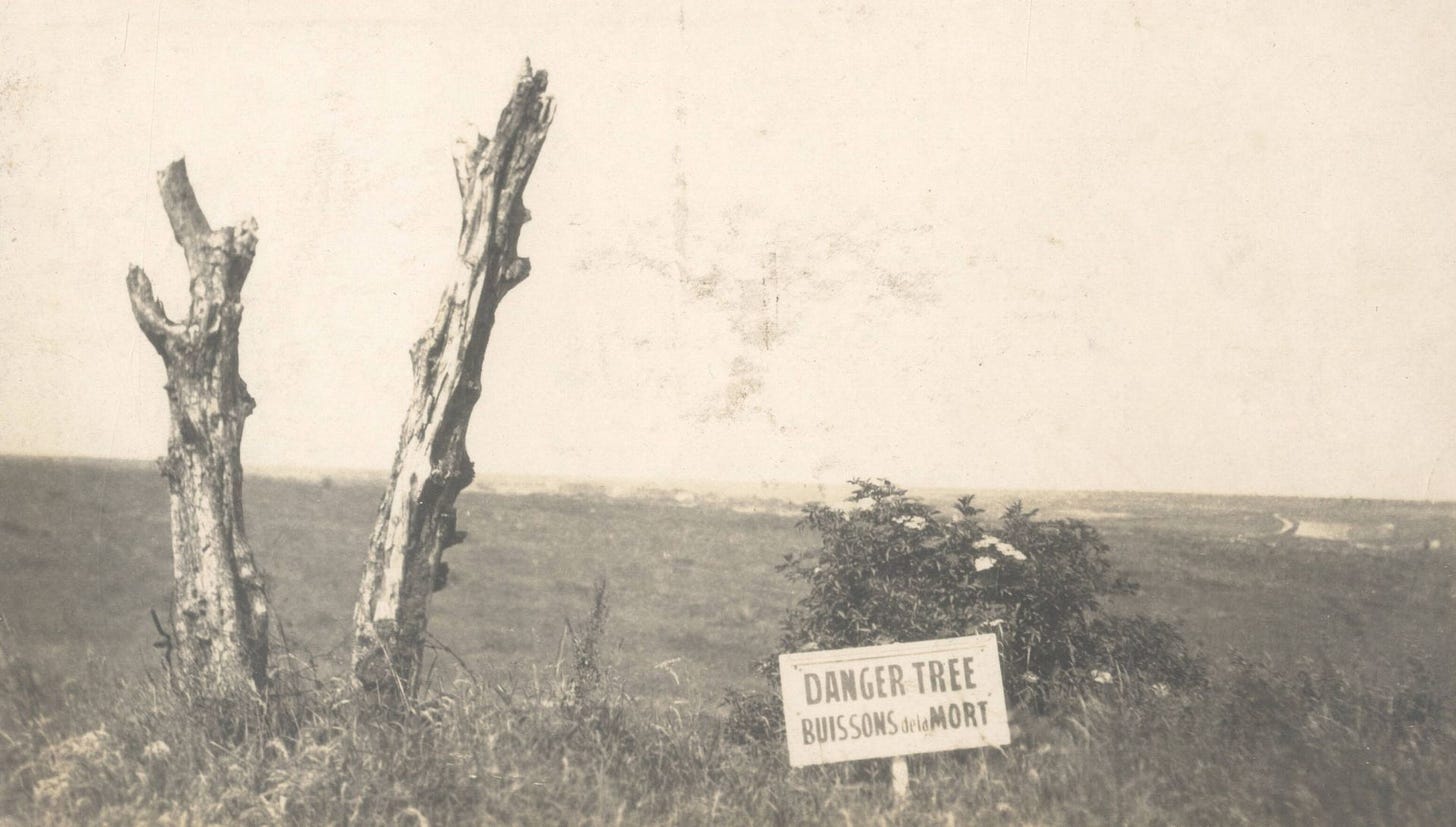
In the trenches as the weather warmed, the troops knew almost nothing about what was coming. Everyone assumed the arrival of Spring was certain to prompt the new offensive and the increasing deployment of men and materiel along the 18-mile front of the Somme was unavoidable evidence to stoke their fears. Owen Steele, a St. John’s shop clerk, who kept a journal of his time with the Newfoundland Regiment, knew the hour of combat was imminent, and even alluded to the consequences. In a letter home, dated just the day before the attack was launched against the Germans on Hawthorne Ridge, he wrote, "I believe the climax of our troubles will be reached within the next few days (after which the day of peace will quickly draw near), though they will undoubtedly bring trouble to many." Steele’s family was to endure the trouble he had referenced. An artillery shell killed him at the Somme a week after he had written his correspondence home.
The commanding officers of the 29th British Division knew their armies, which included the Newfoundlanders, were at a distinct strategic disadvantage. The Germans not only held the higher ground, but they had been fortifying their positions ever since they had invaded France almost two years previous in 1914. As the Newfoundlanders went into the line in April of 1916, an Allied plan of attack was being secretly implemented by the digging of a tunnel in the direction of the Hawthorne Ridge Redoubt. Upon completion, 40,000 pounds of dynamite were laid up in an underground cavern hollowed out by British troops, which was directly under the ridge line and machine gun emplacements of the 26th Wurrtemberg Reserve Division of the German Army. At the moment the bomb was detonated, Welsh, Irish, and Scottish soldiers were to be sent over the top to cross the field of wire and occupy the crater created by the massive explosion. Orders were to then move up out of the crater and take the German positions at the top of the ridge. The Newfoundlanders were to be held in reserve.

There may have been some circumstantial reason for optimism. Five hundred thousand British and French men were arrayed across the Somme front, and the attack, planned for June 29, 1916, was to be preceded by a week-long artillery bombardment of more than 1400 Allied guns. The Kaiser’s infantry would almost surely have a weakened resistance to the British movements. The commander of the 29th Division, General Henry Beauvoir de Lisle, even gave a speech to the Newfoundland Regiment just four days prior to the British assault and he asserted victory was all but certain in the pending offensive. Nothing about warfare, however, is predictable, and seasoned officers are immoral when offering false hopes.
Two days of rain was the first variable that affected the Allies and delayed the attack. Forecasts called for clear skies on July 1, though, and orders were given to detonate the Hawthorne Mine underground bomb at 7:30 a.m., which was to signal British battalions to rise up out of the trenches, move through the wire, and quickly take control of the explosive gash in the earth beneath the redoubt. Records vary on the precise time the blast occurred, but even official accounts suggest it happened prematurely and officers held back their men and waited for the exact assigned minute to launch the attack. There is no dispute, though, about a deadly delay between the instant of the explosion and the Allied assault, a time lag that allowed Axis soldiers precious minutes to take up their guns. By the time the Inniskillen, Royal, and Lancaster Fusiliers had climbed up out of the earth, the Kaiser’s troops had been given at least ten minutes to man their posts. The Germans kept a safe distance elevated above their attackers and dropped the British before they had even been able to reach their own protective wire. They fell by the hundreds, and then the thousands, the rate of death impeded only by the speed with which the German guns were able to discharge. A half-hour after the whistle had blown to send the Brits howling down the wire-crossed plain, the support battalions of the Middlesex Regiment, Dublin Fusiliers, the King’s Own Scottish Borderers, and the Border Regiment also scrambled over their parapets and up to be massacred.
The Newfoundlanders watched what they could from the protection of St. John’s Road, about 250 yards from the firing lines. They were unable to see much of what was unfolding but they surely must have known what awaited. I do not know where my grandfather was on that morning and there is no specificity of his role in the official records of July 1, 1916. Given his physical reaction to Gallipoli, I have always assumed he was more frightened than sanguine about what was likely shaping up to be the end of his short life. Whatever he might have seen could not have been heartening. The contact aircraft floating overhead, observation posts, and messengers were sending confusing information back to headquarters about the failure to advance into German territory. Erroneous word arrived that some of the Axis wire had been breached, which prompted headquarters to order more soldiers across the surface to take advantage of the development. Unfortunately, the information was simply not accurate.
“Where was he?” I asked myself, “the day when the whistle blew, and they went over the top?”
Stepping into one of the deeper trenches, I bent at the knees to see what it was like stealing glances at Hawthorne Ridge. George C. Hiscock likely did the same thing, assessing the barbed wire hazards to be crossed before reaching the enemy. I am certain he thought of his family and the distant island of his birth and wondered how this came to be his destiny. What do young men think about when they are ordered to stand up and march into certain death? He believed, I know, in service to King and country, and no matter what questions my grandfather might have confronted, he was known to be a man of duty and honor.
The Newfoundland Regiment got its orders at 8:45 a.m. Most of them had probably been hoping the slaughter they were hearing, and glimpsing through the smoke and explosions, would cause the officers to not further waste lives and military resources. They were, of course, misguided. Generals seek to win, and the cost of victory or even surrender is rarely laid at their feet. The commander of the Newfs, Lieutenant Colonel Arthur Lovell Hadow certainly did not want failure to befall his men and was prepared to send them forward into glorious victory. He had to know, however, that the trenches up front were filled with bodies and wounded and were being pelted by shell fire. He concluded the only tactical option was to deploy his men across open ground to work through their own wire before reaching German obstacles protecting the Kaiser’s trenches. Hadow had, essentially, ordered his men to die, which he obviously considered less critical than following military commands.
The Newfoundlanders were the only troops moving on the battlefield as they approached their first tangles of wire and the downhill slope toward Hawthorne Ridge. The Germans concentrated their fire in the direction of the islanders and within about twenty minutes, most of the regiment was dead, dying, wounded, or suddenly missing. The few soldiers that made it as far as the British wire were quickly mowed down.
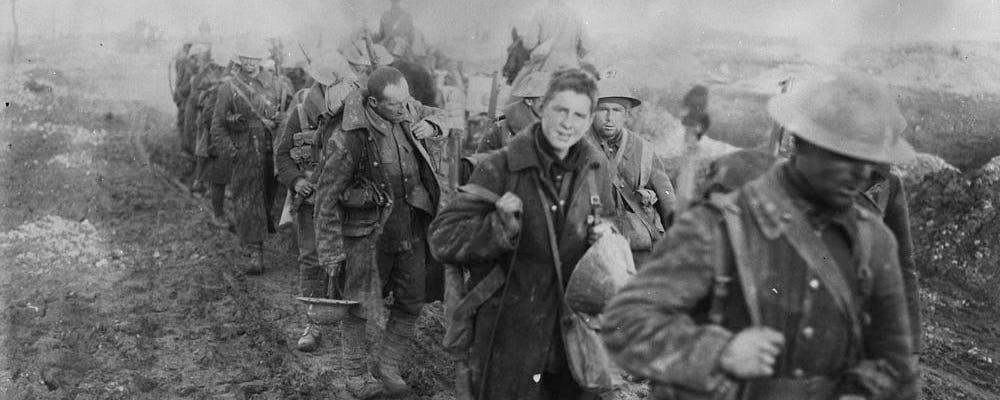
Private Ronnie Dunne, who was among a handful of the survivors that day, made it safely back to the St. John’s Road trench and was taken to a field hospital for wound treatment. During his recuperation, Dunne sent a quick note home to a friend and detailed the horror confronted by the Newfoundlanders.
“I got up out of the trench,” he wrote. “The boys were falling on either side until there were only two of us left. He got it. He was killed. Then I got it. I got two bullets in me. I dropped. Blood was coming out of me. I thought they saw me go down. I stopped the blood as best I could. But I give up. I said my prayers and I seen (sic) my mom, as far as I knew, but I knew she wasn’t there.”
I assume, but cannot know with certainty, my grandfather was in this twisted mass of flesh and blood and was proceeding obediently toward his death. The bloodied soil, cries of grown men pleading for their mothers, parts of bodies, thunderous explosions with shards of metal and bullets whining through the air were all the consequence of failed regional political squabbles and economic conflicts. What did this have to do with a fisherman’s son from the other side of the Atlantic? The British lost 19,240 men on the opening day of the Battle of the Somme and they were probably all as disconnected from the war’s purposes as my grandfather and had died in behalf of obscure notions like king and empire.
The futility of the Newfoundlanders’ attack was best told by numbers. The regiment reported that of the estimated 780 troops that went over the top, 233 were dead, 477 wounded or missing, and only 68 answered roll call the next morning. An unknown number of the casualties had simply bled to death on the battlefield because there was no way medics could move to treat them under the heavy fire from Hawthorne Ridge. One of the survivors, though, was my grandfather, who was unscathed by the battle. Because he never spoke to his family of his experience at the Somme or Gallipoli, we have no idea where George C. was the morning those French fields were irrigated with blood. Perhaps, he had been given duties behind the lines as an admin or messenger or cook because of his physical reactions to what he experienced at Gallipoli or he might have been posted to a relatively safe position to observe the action and send reports to headquarters. Statistically, the odds of escaping the battlefield without harm were improbable.
Especially at an historical distance, the slaughter remains difficult to intellectually access. The scraps of facts offered by witnesses and a handful of survivors carry a massive emotional weight, though, even over time, and offer a vague sketch of what it was like to live through such a tragedy. Private Victor Carew, who, like my grandfather, was uninjured, managed a brief dispatch to his family that subtly explained that all injuries were not necessarily physical.
“It is quite lonesome here now,” Carew wrote. “All my chums are gone. I suppose it will be my turn next. I don’t much care. I am satisfied to die for King and Country. It will be quite a shock when they hear the news about all the fellows being killed.”
Carew met the fate he had foreseen and was killed in action the next year on November 20, 1917.
The most unsettling fact to emerge for Newfoundland on the first morning of the Somme was this: The island’s regiment was destroyed without ever firing even one shot or inflicting a single casualty on a German soldier. An entire generation of ideas and innovation and labor had been lost into the fog of combat. There were other bits of troubling information, too, and as the news trickled back over the ocean the knowledge of losses mounted and began to be felt on a personal and community level. The four grandsons of C.B. Ayre, for example, who was among St. John’s most successful businessmen, all died that morning. Eventually, there were numerous questions about command decisions and why the regiment was wasted in a cause that was already lost.
The lack of thought that went into planning the fight compounded the horrors. The Somme was to be one of the first major battles where new and primitive aircraft played a role. Pilots were used for reconnaissance to gather information on enemy preparations and positions and they would also drop dynamite when the explosions might be of critically strategic value. However, being able to discern Axis troops from Allied infantry crossing the field was not easy at altitude. Consequently, many soldiers, including the Newfoundlanders, were given bright silver triangles to affix to the back of their packs as they moved toward the enemy. The intended purpose was to increase their visibility for spotters in the aircraft and identify them as Allied troops, and to especially avoid dropping explosives anywhere in their vicinity. Unfortunately, on a clear day like the first morning of the Somme, those metal badges brightly reflected the sun, and as the wounded crawled back through their dead and crying comrades toward safety in the Allied trenches, the light flashing off their backs cued the German gunners that they were still alive. The living wounded immediately became secondary targets and were eliminated. British commanders seemed less compelled to explain their horrible strategic and tactical blunders than to assign them a false value in the greater war effort. They knew the hopelessness of the orders that had been given to their field officers but needed to convince themselves and others there was meaning in the losses.
In the instance of the Newfoundland Regiment, only cursory examination of the downward slope of the approach to Hawthorne Ridge, which was thick with barbed wire, ought to have caused a rational analysis that the attack must be called off. In his seminal work on the cultural and historical impact of the Somme on Newfoundland, Robert J. Harding of Nova Scotia’s Dalhousie University, in his study, Glorious Tragedy: Newfoundland’s Cultural Memory of the Attack at Beaumont Hamel, 1916-1925, explained the military dynamics affecting perception of facts.
“Unlike historians,” he wrote, “battalion commanders and generals were not primarily concerned with assessing the merits and faults of their strategies and tactics. For them, finding purpose was more important than laying blame. They were fighting a war they intended to win, and, if they had been defeated, it was vital to at least suggest their soldiers had died for good reason. There had to be something for the British command to build on, there had to be something inspiring about Beaumont Hamel, which could be used in Newfoundland to mitigate the shock.”
Although the full picture of what had happened to the Newfoundland Regiment only crossed the Atlantic in incomplete missives, the scope of the loss began to form almost household by household on the island. The military infrastructure, meanwhile, went about the business of trying to add importance to deaths by suggesting the sacrifice had a larger strategic influence. An argument emerged and eventually prevailed that the resources deployed by the Germans against the Newfoundlanders allowed the British and French to make substantial gains on the southern reaches of the Somme front, which was the only position that showed any military progress in the opening days of battle. The assertion was that the Germans had to reposition men and artillery away from the southern sectors to be able to stop the advancing brigades that included the Newfoundlanders.
The claim was essentially nonsensical and easily refuted. The success to the south was based upon completely separate and independent factors and Newfoundland had nothing to do with its outcome. No evidence ever emerged in German military archives or contemporary reporting that guns and ammo had been repositioned from the south to Hawthorne Ridge. There was also the opinion that the experience gained by the regiment led to Newfoundland’s victory at Gueudecourt in October of the same year. The perspective is a bit specious given the fact that the soldiers with experience at Beaumont Hamel were either dead or wounded and the number of survivors were not sufficient to comprise a significant portion of the Guedecourt force. Knowledge cannot be transferred from the dead.
The families of soldiers killed in wars always seek meaning for sacrifices even when the war itself lacks any human or historical value. The 58,000 dead as part of the U.S. involvement in Vietnam were ostensibly fighting to prevent the expansion of Communist China into the region, which meant, by extension and political foment, that particular form of government would become a greater menace to the West if it were not stopped. The extrapolation of that rationale overlaid on dead American service members was that they had died “protecting our freedoms.” The assertion, of course, is mostly fatuous, and the combat deaths of Vietnam were as much about geopolitics and economics as those suffered by the Royal Newfoundland Regiment. The soldiers sent to topple Saddam Hussein for terrorist acts that had no connection to his regime, and weapons of mass destruction that did not exist were also victimized by a propaganda ruse.
What other comfort remains for the bereaved? Hearts can be hardened against sadness over time, but the answer for Newfoundland was to focus on the glories achieved by their little dominion of 240,000, even though the island had mortgaged its future for nothing but grief. Official Great Britain and the military leadership understood the value of praise for the unlikely warriors. General Aylmer Hunter-Weston, commander of the British 4th Army’s VIII Corps, revealed the policy of flattery when he reviewed the Newfoundland Regiment’s remainders two weeks after the devastation at Beaumont Hamel. In his report to the prime minister, Hunter-Weston wrote, “That regiment covered itself with glory on the 1st of July by the magnificent way in which it carried out the attack entrusted to it. There were no waverers, no stragglers, and not a man looked back. It was a magnificent display of trained and disciplined valor, and its assault only failed of success because dead men can advance no further.”
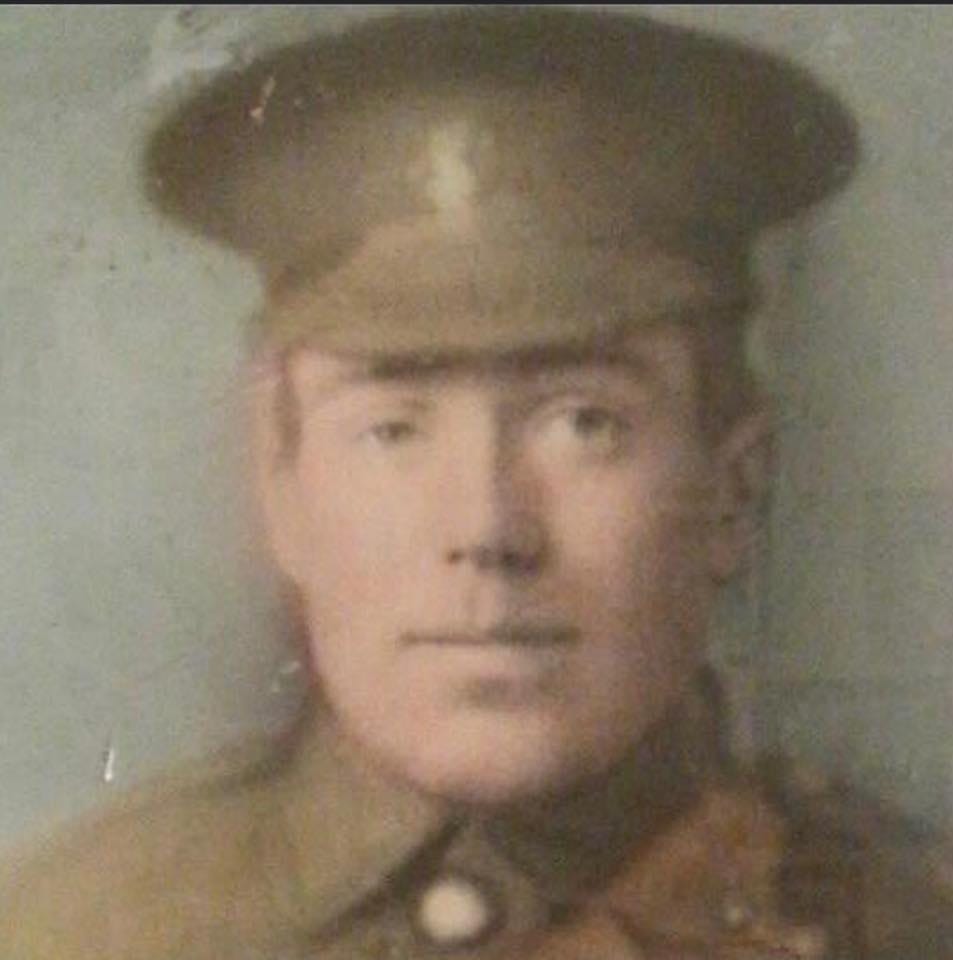
Regardless of the tone-deaf and insensitive praise, the assessment may have had some influence on the king by bringing his attention to the Newfoundland Regiment. In spite of the depredations of the Somme, the unit remained in active combat throughout the war and was even involved in the last Allied assault that prompted the Germans to concede defeat. The Newfs had also fought with great success at Cambrai, Monchy-le-Preux, and Sailly-Saillisel, and before the war had ended the men from the empire’s oldest colony became the only combat force operating during the Great War to be given the official imprimatur of the king by awarding the Newfoundland Regiment with the prefix, “Royal.”
Similar developments all had the effect of changing the context and perspective of the inexcusable death march perpetrated by incompetent and glory-seeking commanders at Beaumont Hamel. When he dedicated the Newfoundland Memorial in 1925, Field Marshall Douglas Haig even suggested Beaumont Hamel was Newfoundland’s and the Allies’ Gettysburg, which is one of the more fallacious claims ever made in the revisionist history of warfare. Gettysburg resulted in military and political change in the American Civil War. General Robert E. Lee believed if he invaded the north and won a decisive battle that the emerging outcome of the war was certain to turn positively in the direction of the Confederacy. When his grandest ambition proved a failure at a total cost of 50,000 lives on July 4th, 1863, the South’s destiny was a foregone conclusion. The annihilation below Hawthorne Ridge lacked any remotely comparable military or political impact. There was only death, and the living have been left to either glorify or justify the tragic decisions that were without purpose.
After walking the trenches for almost three hours at the Beaumont Hamel Memorial Park, I skirted the perimeter of the battlefield and saw cemeteries of the men who had been fighting on the flanks of the Newfoundlanders. These were all casualties from the British empire that included the Welsh, Scots, and Irish. Many of them were unidentified and lay in two plots of land at Hawthorne Ridge, and a mass grave of about forty unknowns at Hunter’s Cemetery, which was a shell hole left by a blast from artillery ordnance. Hunter’s sits at the top of the Y Ravine, a steep crevasse that was used unsuccessfully to attack the Germans. Four hundred men are buried in that spot and nearly a third of them are unknown.
I stopped at the “danger tree” and was convinced I sensed the hopeless fear in the hearts of the few men who had reached that point. When I got close to tombstones, I took out my reporter’s notebook and tried to write down inscriptions. I found this impossible. I cried and realized that to take those words away to some other place besides my memory would feel like an intrusion, a form of theft. I did not know if, or when, I might ever return so I took another long look at the sloping battlefield and grass woven through the trenches by summer sun and gentle rains, the only plot of sovereign French soil ever deeded over to another country. I was overcome with the sheer statistical improbability of my grandfather’s survival, which led to the even more unlikely birth of my mother. Mathematically, in the cascade of one unlikelihood to another, I concluded, I ought not to have ever entered the world, either, but there I stood, breathing deeply, sobbing, pondering obsessively, and looking across the breadth of a mysterious human memory of war.
My taxi had returned at the appointed time and I walked toward the gravel parking lot, slowing as I passed the eternal caribou. I still wanted to understand things and not just feel them, but logic is undone by emotion at Beaumont Hamel. I had been left lethargic and distraught for days after my first visit to the Vietnam War Memorial in Washington, D.C. Those names carved into that obsidian black wall were a frightening list of my contemporaries. The difference that obelisk had with Beaumont Hamel, I assumed, was that the Newfoundlanders were honored and remembered on the soil where they had been mown down, which gave it even greater power over the human heart.
In the taxi back to Amiens, I kept thinking about my grandfather on that day and in that place. No bullet or shrapnel had found him at the Somme, but his stomach’s ulceration had become acute and his vomiting of blood became alarmingly recurrent. His regimental record indicates George C. Hiscock was evacuated to Belgium for treatment of “gastralgia and dyspepsia.” His anguish and fear appeared to be hollowing him out from the inside. He was transferred to England for further treatment just over two months after Beaumont Hamel and, eventually, put on a ship home to St. John’s. My grandfather was discharged as unfit for duty a little less than a year later on August 23, 1917, but, just after the beginning of 1918, was attached to a hometown military depot.
My guess is that in a different time my grandfather, and his surviving compatriots, would have been treated for Post-Traumatic Stress Disorder, or what became known as “shell shock.” Instead, I am sure he was given basic medication and calcium pills to settle his stomach while he took on his new job at the depot. George C.’s health improved, and he eventually became the head cook at the facility, which allowed him to enjoy the pay and benefits of the military without officially being part of a unit.
Nonetheless, officers and recruiters kept pestering him to “re-attest,” or re-enlist because the empire was still involved in the Great War. Unsurprisingly, grandfather consistently refused entreaties to go back into the armed forces, and, ultimately, was “struck off strength” after two years and 349 days of service to king and empire. Officers also relieved him of his job overseeing other cooks because they felt he was taking advantage of the military and its pay and benefits. Grandfather Hiscock probably left the army with some sense of relief and was able to turn his focus to building a civilian life in the fisheries or the sealing industry. Guns and dying and combat were all now carefully sequestered in his past as he walked off the base for a final time.
But no man can forget such a war.